This list of the Top 25 best trades in Montreal Canadiens history is our third Best Trades list, after the Top 25 best trades in Maple Leafs history and the Top 25 trades in Canucks history.
The trades on this list are ranked by Point Shares. For an explanation as to Point Shares and the rankings, see the Maple Leafs list.
In Canadiens history, they have given up a whopping 1,222.67 more Point Shares than they’ve received back. So that’s a net of loss of nearly 4 Gretzkys worth of NHL players given up in trades over the years.
Rest assured, the worst Habs trades list will be a lot more fun for all of us who aren’t Habs fans.
With that out of the way, on to the best trades in Montreal Canadiens history:
25. 4 picks for Terry Harper – 19.8 PS
Habs get:
- 1974 2nd Rounder (Gary MacGreg) – 0 PS (0 GP)
- 1975 1st Rounder (Pierre Mondou) – 38.5 PS (194G, 262A for 456P, +213 in 548 Games)
- 1975 3rd Rounder (Paul Woods) – 0 PS (0 GP)
- 1976 1st Rounder (Rod Schutt) – (-0.1) PS (0P in 2 Games)
Kings get: Terry Harper – 18.6 PS (6G, 46A for 52P +69 in 234 Games)
On August 22, 1972 the Habs traded Terry Harper for four picks in three drafts.
Defenceman Terry Harper was a crucial part of the ’60s Habs, contributing to five Stanley Cups between 1965 and 1971. But by the 1972 off-season Harper was 32 and the Habs were ready to move on from him.
The Kings were ready to give a lot to get him.
Harper was fine for the Kings, he never scored much but that wasn’t his role. +69 on an expansion team is pretty good. The Kings traded him to the Red Wings in 1975 when Harper was 35. (He would retire in his 40s.)
The thing is, 4 draft picks from an expansion team is also pretty good.
Gary MacGregor, their 1974 2nd Rounder (30th overall), never played for the Habs and only played in the WHA.
Paul Woods, their 1975 3rd Rounder (1st overall), also never played for the Habs, and was waived in 1977 and claimed by the Wings.
Rod Schutt, their 1976 1st Rounder (13th overall), did play for the Habs. But only in 2 NHL games while he dominated in the AHL. The Habs traded him for a 1st Round pick in 1978. They didn’t win that trade but didn’t lose it by enough to make our Worst Trades list.
That leaves Pierre Mondou, their 1975 1st Rounder. Mondou won three Cups with the Habs and scored 30 goals three times eight NHL seasons.
24. Sprague Cleghorn for Arbour and Mummery – 20.6 PS
Habs get: Sprague Cleghorn – 22.9 PS (42G, 31A for 73P in 98 Games)
Tigers get:
- Amos Arbour – 1 PS (15G, 7A for 22P in 46 Games)
- Harry Mummery – 1.3PS (4G, 2A for 6P in 27 Games)
On November 26, 1921 the Habs traded winger Amos Arbour and defender Harry Mummery, coming off a career year, for Wanderers/Senators legend Sprague Cleghorn.
Arbour had a career year in 1919-20, finished Top 10 in points, but had regressed in 1920-21.
The Habs had actually just acquired Mummery from the Bulldogs and now that they had relocated to Hamilton, and Mummery had a career year, they seemed to want him back.
Meanwhile Cleghorn had a strange time in the league since getting picked up by the Senators when the NHA became the NHL. Per Wikipedia:
After recovering from his leg injury, he played for the Senators in 1918–19 and registered 13 points in 18 games. The next season, he played in a defensive pair with Eddie Gerard and scored 21 points in 21 regular season games and one point in five playoff games. That season the Senators defeated the Seattle Metropolitans to win the Stanley Cup. In an attempt at league parity, the NHL transferred him to the Hamilton Tigers in December 1920, but Cleghorn refused to report to the Tigers. The Senators asked that he be allowed to return to their team, for which George Kennedy, owner of the Montreal Canadiens, threatened to have Ottawa thrown out of the league. Cleghorn eventually signed with the Toronto St. Patricks, playing with them for the regular season in which the team won the NHL’s second half championship. As the management became discontented with his play, he was eventually released from the club in March after the St. Pats lost the play-offs. He returned to Ottawa during their playoff series in time to be a member of the 1921 Stanley Cup-winning team. The league again attempted to transfer Cleghorn to Hamilton in 1921, but he again refused to report.
Source
At this point, he was traded to Montreal.
Still, Hamilton probably felt good about what they were getting back for a player who would just not play for them, but that’s not how it worked out.
Arbour’s scoring declined in both seasons after the trade, as it had in the season before the trade and barely over two years later the Tigers traded him to Toronto.
Even sooner than that, the Tigers gave up on Mummery, whose scoring had also disappeared, and traded him to the rival WCHL. (Yes, you could trade players form league to league back then.)
Meanwhile, Cleghorn finally found stability in the NHL. He had the best season of his career immediately after arriving in Montreal, finishing 8th in Goals, 9th in Assists and 8th in Points. (Yes, even though he was a defenceman.) The next season, for the second time in his career, he was the NHL’s best defenceman by Defensive Point Shares. More importantly the Habs won a Stanley Cup in 1924.
Eventually, the Habs tired of Cleghorn’s temper, as teams previously had and traded him to the Bruins for cash in November 1925.
23. Pick for Dave Gardner – 21 PS
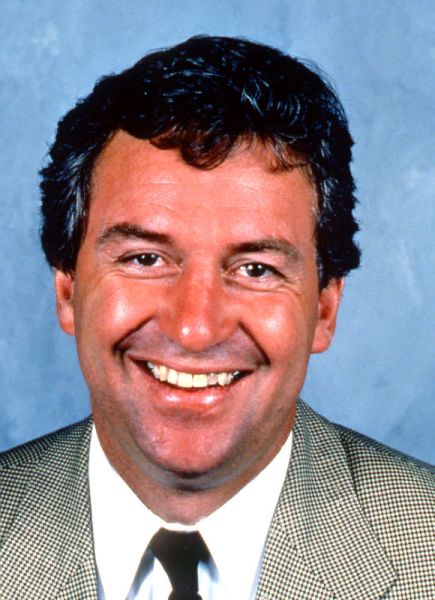
Montreal gets: 1974 1st Round Pick (Doug Risebrough) – 21.3 PS (117G, 185A for 302P, +159 in 493 Games)
St. Louis gets: Dave Gardner – 0.3 PS (5G, 4A for 9P, -9 in 2 Games)
On March 9, 1974 the Blues traded their 1st Round pick for Montreal prospect Dave Gardner.
The Blues were not good this year so it’s unlikely they made the deal in order to help with a playoff run. Rather, it seems like they were banking on the draft being not great – and this is the “Greg Joly Draft,” so they weren’t wrong. Gardner was the 8th overall pick in 1972 and was only 21 at the time.
But Gardner didn’t work out: he performed at basically the same PPG pace he had in limited games for the Habs, 0.4. And only 9 games into the next season the Blues traded Gardner to the Golden Seals.
Risebrough was never a star but, instead, was an important part of the Habs dynasty, especially when they matched up against the Broad Street Bullies. He could chip in offensively sometimes and once scored 22 goals. While Risebrough was agitating, the Habs won four Cups.
Risebrough was traded to Calgary before the 1982 season.
22. Picks for Larouche – 21.6 PS
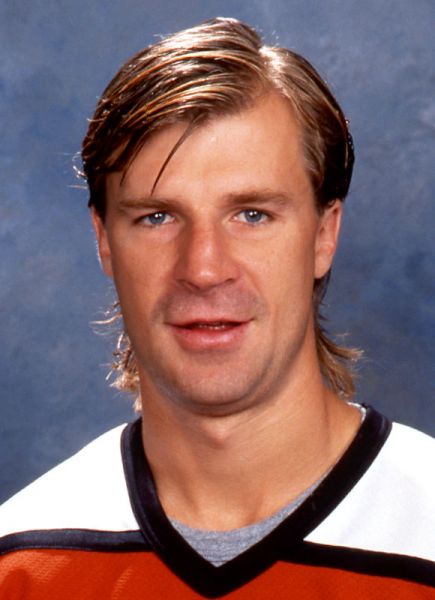
Habs get:
- 1984 1st Rounder (Petr Svoboda) – 49.1 PS (39G, 190A for 229P, +162 in 534 Games)
- 1984 2nd Rounder (Brian Benning) – 0 PS (0GP)
- 1985 3rd Rounder (Rocky Dundas) – 0 PS (0GP)
Whalers get:
- Pierre Larouche – 6.2 PS (43G, 47A for 90P, -42 in 83 Games)
- 1984 1st Rounder (Sylvain Cote) – 21.3 PS (31G, 61A for 92P, -48 in 382 Games)
- 1985 3rd Rounder (Bruce Racine) – 0 PS (0GP)
On December 21, 1981 the Habs traded Pierre Larouche, 26, to the Whalers with some distant picks, for more distant picks in return. In fact, by the time the first pick was selected, Larouche was no longer on the Whalers.
Larouche might be viewed as the Kovalev of his day, a phenomenally talented player who frustrated coaches and fans with inconsistent effort. The Habs acquired Larouche in November 1977, after Larouche had scored over 50 goals and 111 points a few seasons earlier for the Penguins. But, due to health issues and consistency issues, Larouche never turned into the hoped for secondary scoring for Lafleur until after the team began declining.
Larouche had 21 points in 22 games at the time of the trade so the Habs should have been selling high and yet all they got was two pick swaps and an extra 2nd rounder in the 1984 draft. On paper, it likely didn’t look good.
Larouche was fine for a bad Whalers team when he was healthy, and Larouche’s PPG for the Whalers is the highest for any franchise he played for. But the Whalers soon decided to move on and traded him to the Rangers less than 2 years later. (Larouche would have his best playoff ever for the Rangers a few years after that.)
So let’s get to the picks: As usual the Habs were smart in acquiring draft picks from a worse franchise. In 1984, they ended up moving up from 11th to 5th as a result of this trade, in addition to getting that additional 2nd rounder. And the next year they moved up from 58th to 47th.
Three of the picks resulted in nothing for either team:
- The Habs traded the pick that became Benning before the draft
- Dundas never played for the Habs
- The Whalers traded the pick that became Racine before the draft
With the Habs 1st Rounder in 1984, the Whalers drafted Sylvain Cote. Cote ended up having a decent NHL career, though not perhaps as good as you’d want from 11th overall. (He actually has more career Point Shares than Svoboda, though that’s because he played 143 more games.) But Cote wouldn’t put up much offence until he was traded to Washington in 1991. He was only ever a bottom 6 forward for the Whalers.
Petr Svoboda, drafted 5th overall that same draft, had a much different career. He quickly became a staple of the Habs’ blueline and actually led the NHL in defensive point shares in 1988. Svoboda helped the Habs win a Cup in 1986 and, in 1989, he was the second best offensive defenseman on a Habs team that went to the final. The Habs traded him to the Sabres in 1992.
21. Hayward for Ingman and Penney – 22 PS
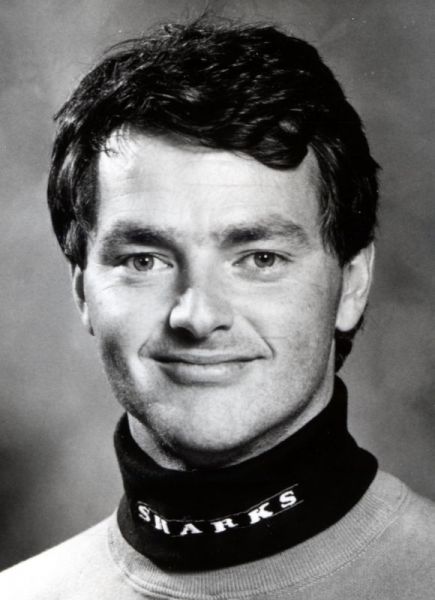
Habs get: Brian Hayward – 22.4 PS (71-48-17, 5 SO, 2.46 GAA, .889 SV%, 5.7 GSAA)
Jets get:
- Jan Ingman – 0 PS (0GP)
- Steve Penney – 0.4 PS (3-8-2, 0 SO, 3.89 GAA, .828 SV%, -16.7 GSAA)
On August 19, 1986 the Canadiens and Jets traded goalies with the Habs throwing in a Swedish prospect who had yet to come over to North America.
Hayward had just turned 26; he was the Jets starter and had finished Top 5 in Vezina voting in 1984-85.
Penney had won the Habs’ starting job that same season and finished Top 5 in Calder voting and made the All Rookie team. But then Penney got hurt and Patrick Roy happened. (Penney was left off the 1986 Stanley Cup though he was given a ring.)
Ingman was drafted 19th overall in 1981, having just won the Swedish Championship.
So the Jets were banking on Penney, the younger goalie, being a better starter than Hayward. But that’s not what happened.
Ingman never played an NHL game. He did win 2 more Swedish Championships, though.
Penney never recovered for his injuries and never played more than 8 games in an NHL season after the trade.
Hayward, meanwhile, became Patrick Roy’s backup. As such, he won 3 Jennings Trophies in the three seasons immediately after the trade. (Bizarrely, he also finished Top 5 in Vezina voting, 3 spots ahead of Roy who was the starter and had a better season. There’s no understanding some awards voters.) The Habs traded him to the North Stars in 1990.
20. Reay for Rossignol – 23.7 PS
Habs get: Billy Reay – 24.6 PS (103G, 162A for 265P in 475 GP)
Detroit gets:
- Fern Gauthier – 0.8 PS (14G, 27A for 25P in 146 GP)
- Roly Rossignol – 0.1 PS (1G, 2A for 3P in 8GP)
On September 11, 1945 the Habs traded Ray Getliffe and Roly Rossignol for Billy Reay.
Reay was a 27 year old Red Wings forward who could not make the team – he played 4 games in two years – but who was dominating the Quebec Senior Hockey League whenever he wasn’t playing in the NHL. The Habs apparently thought he could play for them.
Ray Getliffe was a Centre/Left Wing who had played Boston before the Habs. Though rarely a major offensive contributor, he had an excellent season and playoffs in 1943-44.
Rossignol was a former Red Wings prospect who had been loaned to the Habs but then returned to the Red Wings and properly traded back to the Habs. In all that time he played 1 game for Detroit and 5 games for the Habs, but he scored 5 points.
However, just before the season started, Getliffe retired (he was 31). So the Habs sent 26-year-old RW Fern Gauthier to the Wings in his stead. Gauthier had two decent seasons under his belt, one for the Rangers and one for the Habs.
Gauthier spent his time on the Wings in between the NHL and the AHL. Eventually Detroit traded him to an AHL team they didn’t have a deal with in 1949.
Rossignol played 8 games for the Red Wings before being released.
But Reay instantly proved the Habs were right, scoring at a .66 PPG pace his first season for Montreal and upping it to .71 the next. Reay helped the Habs win a Cup that first season. In the 1948-49 season he finished Top 10 in Goals, Assists and Points. And he finished Top 10 in Assists another time. Reay won one more Cup with the Habs before he retired in 1953.
19. Daigneault for Sandelin – 23.9 PS
Habs get: J.J. Daigneault – 24.5 PS (22G, 68A for 90P, +68 in 352 Games)
Flyers get: Scott Sandelin – 0.6 PS (3A for 3P, -3 in 15 Games)
On November 7, 1988 the Habs traded Scott Sandelin to the Flyers for J.J. Daigneault.
Sandelin was a 2nd rounder in 1982 with some decent success in the AHL. He was 24 at the time of the trade.
Daigneault was the higher pedigree draft pick and younger, and he was also traded from the team that drafted him (the Canucks) but he had 236 NHL games under his belt.
Sandelin stayed in the AHL after the trade and would only make it into 15 NHL games in the 1990-91 season. He was released but later played 1 more NHL game for the North Stars.
Daigneaut finished Top 5 in Defensive Point Shares in the 1991-92 season and later helped the Habs to the ’93 Cup. He was never a star but had a good stretch for the Habs. He was traded to the Blues in 1995.
18. DeWolf and Souray for Malakhov* – 27.6 PS
Habs get:
- Josh DeWolf – 0 PS (0 GP)
- Sheldon Souray – 28.6 PS (62G, 98A for 160P, -44 in 324 Games)
- 2001 2nd Rounder (Andreas Holmqvist) – 0 PS (0 GP)
Devils get: Vladimir Malakhov – 1 PS (1G, 4A for 5P, +1 in 17 Games)
On March 1, 2000 Montreal traded Top Pair defender Vladimir Malakhov at the deadline for two of New Jersey’s prospects and a pick in the next year’s draft.
Vladimir Malakhov had been one of the Habs’ most important defencemen since they acquired him from the Islanders in 1995 (see below). Though we don’t have ice-time for most of his time in Montreal, Malakhov was playing nearly 24 and a half minutes the season before the trade. (Though he seems to have been playing on the second pair the season of the trade.)
The Devils were one of the best teams in the NHL and were looking to acquire one more defender, so they did a classic win-now trade, giving up a pick in the 2001 draft plus 23-year-old D Souray, who had already played in over 180 NHL games, and 22-year-old D Josh DeWolf, who was still in the AHL.
It worked out for both teams: Malakhov helped the Devils win a Cup, playing Top 4 minutes. So, if we were able to count Cup wins, this trade wouldn’t be on this list. But Malakhov played a total of 17 regular season games for the Devils, leaving in free agency that summer.
Josh DeWolf never played a game in the NHL, though he played in the AHL till the lockout.
And Holmqvist, the pick, only spent two years in the North American minor leagues before returning to Europe. He had a pretty good year in Sweden (and later Germany).
But Souray, of course, became the first D to score 26 goals in 5 years in 2006-07.
This is one of those trades that really shows the flaws in our method: Jersey would never take back this trade and you could argue that, despite Souray’s offense, Habs fans would have prefer to have Malakhov.
At least in terms of Point Shares, the Habs win this. But we’re kind of cheating, right?
17. Wilf Cude for cash – 28.6 PS
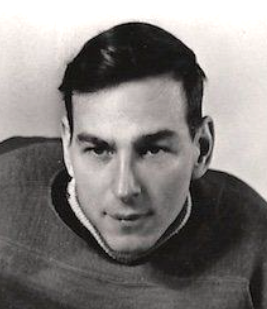
Habs get: Wilf Cude – 28.6 PS (80-101-39, 2.65 GAA, 18 SO)
Quakers get to pay off some creditors.
Okay, we’re cheating again, but anytime you can get a starting goaltender by giving money to a nearly defunct franchise, you have to call it a win!
On October 19, 1933 the Philadelphia Quakers, who who had already suspended operations for the past two seasons (but wouldn’t fold until 1936!), traded their former starting goaltender, Wilf Cude, to the Habs for an unknown amount of money.
Cude’s one full season for the Quakers had been disastrous. In the first cancelled Quakers season, 1931-32, Cude bounced around between unsuccessful stints on NHL teams (the Bruins and the Black Hawks) and the IHL and the Cam-League (the predecessor to the AHL). But the Quakers retained his rights.
The Habs saw an opportunity to get a backup for Lorne Chabot, who they had just traded for to replace George Hainsworth.
However, Cude only made it into one game before he was loaned to the Red Wings. (As was a fairly common practice in those days.) With the Wings, Cude led the league in GAA and then the Wings to the Stanley Cup finals, leading the playoffs in Minutes (and Goals Against, and Losses). So the Habs quickly grabbed him back.
Cude never led the Habs to a Cup but he did make two 2nd All Star Teams. And given that he was essentially free, it’s a pretty good trade.
16. 5 players for 6 players in 1963 – 32.2 PS
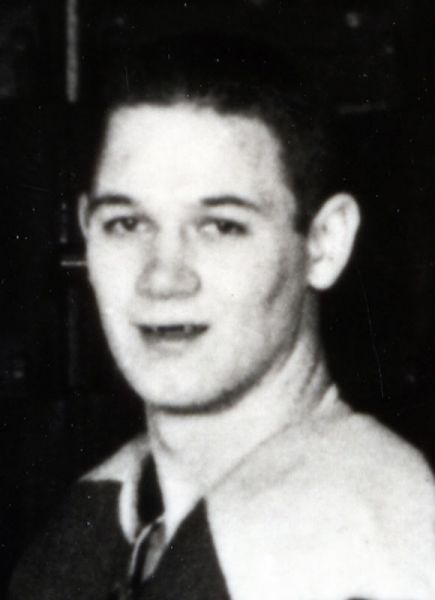
Habs get:
- John Chasczewski – 0 PS (0 GP)
- Bruce Cline – 0 PS (0 GP)
- Terry Gray – (-0.1) PS (0P, -2 in 4 Games)
- Ted Harris – 32.3 PS (18G, 95A for 113P, +99 in 407 Games)
- Wayne Larkin – 0 PS (0 GP)
Rangers get:
- Wayne Boddy – 0 PS (0 GP)
- Fred Hilts – 0 PS (0 GP)
- loan of Gary Bergman – 0 PS (0 GP)
This forgotten June 1963 trade’s success revolves entirely around Ted Harris, a journeyman D. Harris managed to lead the league in Plus/Minus in 1965-66, had the NHL tracked that stat back then. He also made one All Star 2nd Team and finished Top 5 in Norris voting that same season (on a team with Terry Harper, Guy Lapointe, Jacques Laperriere and Serge Savard).
Only one other player from the trade played a game for either team post trade, Terry Gray. But he couldn’t stay in the Habs lineup. He later found himself on the Kings after a decent minor league career. Cline had played a few games in the ’50s but never played in the NHL again after that. Smith benefitted from expansion, like Gray and later played for the Kings. The other guys remained in the minors.
15. Turgeon and Malakhov for Muller, Darby and Schneider – 33.15

Habs get:
- Vladimir Malakhov – 26.7 PS (42G, 99A for 141P, +17 in 283 Games)
- Pierre Turgeon – 14.1 PS (50G, 77A for 217P, +35 in 104 Games)
Islanders get:
- Craig Darby – (0.2) PS (2A for 2P, -2 in 13 Games)
- Kirk Muller – 1.1 PS (7G, 8A for 15P, -7 in 27 Games)
- Mathieu Schneider – 6.6 PS (14G, 42A for 56P, -23 in 78 Games)
This infamous 5-player trade occurred on April 5, 1995, at the deadline. But given how the Islanders faired, it actually worked out a lot better for the Habs than many fans might think.
Turgeon was a French star. In 1993 he had finished 5th in Hart voting, 5th in Points and 6th in Goals, and some feel his injury that playoff derailed the Islanders’ best chance to win a Cup since 1984. That same season, Malakhov had made the All Rookie team.
Schneider was a home-grown D (see the next trade) who was one of the league’s best D in 1991-1992 (Top 10 in Defensive Point Shares). Muller had come over from the Devils, where he had been the team’s star, and was the Habs’ second best forward (by points, anyway) when they won the Stanley Cup in 1993. (One reason for Habs fans to hate this trade: Schneider is younger than Malakhov and had far more NHL experience.) Darby was a 2nd Rounder who had managed to make it into 13 games this season, but he was a -13.
It was Muller moving on in particular that irked Habs fans. But the trade was likely made because, only two years removed from the Cup, the Habs were missing the playoffs. This was before the infamous Patrick Roy trade but the Habs had already started trying to change things around, having traded Desjardins for Recchi earlier in the season.
While Habs fans were unhappy with the trade, it didn’t work out at all for the Islanders and, at least by regular season Point Shares, worked out quite well for the Habs.
Darby didn’t do much for the Islanders, playing what appears to be a 4th line role until he was waived the next summer.
Schneider was traded one year later, again, at the deadline, when the Islanders failed to make the playoffs. (This trade is 24th on our list of Worst Leafs Trades of All Time, but it didn’t work out as well as it could have for the Islanders given who they got in return.)
And Muller infamously didn’t want to play on the Island. He refused to report, the Islanders threatened not to pay him and eventually he played 27 games for them before they traded him to the Leafs in January of 1996. (Yes, the Isles traded two of these players to the Leafs within a month and a half. That’s why it’s a bad trade for the Isles.)
Malakhov played pretty well for the Habs, with his role ranging from Top 4 to Top 2. (We only have ice time for his last 2 seasons in Montreal.) The Habs traded him to the Devlis at the 2000 deadline (see above); he played Top 4 minutes on his way to a Stanley Cup.
Turgeon went to the All Star Game in 1996 (for his 4th and final time) and was named Captain partway through that season. His 96 Points that season were only 17th that season but it was the second best season of his career by Point Shares. Inexplicably, only 9 games into the 1996-97 season, the Habs traded Turgeon to the Blues for Shayne Corson, the ex-Hab.
T-14. A pick for David Maley – 34.8 PS
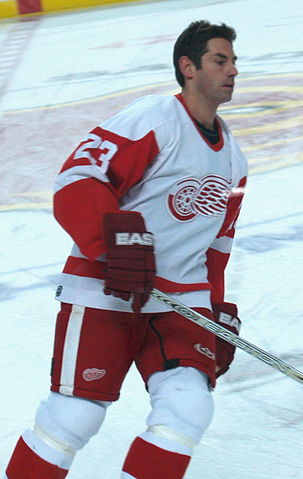
Habs get: 1987 3rd Round Pick (Mathieu Schneider) – 37.8 PS (68G, 148A for 216P, +36 in 383 Games)
Devils get: David Maley – 0.4 PS (32G, 50A for 82P, -33 in 280 Games)
When fans scream at their teams about trading picks for role players, it’s trades like this they’re worried about.
Maley was a 2nd Rounder who had a decent career at Wisconsin. His numbers for Montreal were not great – 0.35 PPG in 51 games, in the ’80s.
But given that the pick they were giving up was in a lower round, you can understand what New Jersey may have been thinking.
But the pick turned into Schneider. So, oops. Before the Habs traded him (see above), Schneider helped them win a Stanley Cup. He also finished Top 10 in Defensive Point Shares in 1992.
T-14. A pick for Jimmy Roberts – 34.8 PS

Habs get: 1979 3rd Round Pick (Guy Carbonneau) – 38.3 PS (221G, 326A for 547P, +158 in 912 Games)
Blues get:
- Jimmy Roberts – 3.5 PS (4G, 10A for 14P, -21 in 74 Games)
- Cash?
On August 18, 1977 the Canadiens traded long-time D (and occasional forward) Jimmy Roberts to the only other team he ever played for, the St. Louis Blues, for a 3rd Rounder, and possibly some cash.
Roberts had played for the Habs since 1963, with a stint on the Blues when the league expanded. He had won five Cups with the Habs (in ’65 and ’66 and then in ’73, ’76 and the season he immediately before this trade) and had made it to the Finals with the Blues back when the league was infamously split between new and old teams.
He had 153 playoff games under his belt. But he had turned 37 during his last Cup run. We don’t have ice time for that Cup run, but we assume his role wasn’t huge. So they wanted to get an asset for him.
Now, there’s no way the Blues or the Habs could have predicted the return on a 3rd Round pick but it’s safe to say it didn’t work out for the Blues.
Roberts played one final season for the Blues, finishing as a -21 (halving his career plus/minus with that franchise).
With their pick, the Habs drafted Guy Carbonneau. As we will discuss with another legendary later pick the Habs made, we should note that the Habs didn’t have some kind of special knowledge here. Before Carbonneau, the Habs drafted
- Gaston Gingras
- Mats Naslund
- Craig Levie (immediately before Carbonneau).
Nonetheless, Carbonneau went on to a Hall of Fame career as perhaps the greatest defensive forward of his era. His three Selke Trophies remain tied for the 3rd most all time behind only Patrice Bergeron and teammate Bob Gainey. He also finished second in Selke voting two other times, third another time and Top 5 a total of six times. Carbonneau helped the Habs win their last two Cups and at the end of his career he would win a third with the Stars.
13. Damphousse for Corson – 35.7
Canadiens get:
- Vincent Damphousse – 46.9 PS (184G, 314A for 498P, +26 in 519 Games)
- 1993 4th Round Pick (Adam Wiesel) – 0 PS (0GP)
Oilers get:
- Shayne Corson – 9.7 PS (53G, 84A for 137P, -44 in 192 Games)
- Brent Gilchrist – 0.6 PS (10G, 10A for 20P, -10 in 60 Games)
- Vladimir Vujtek – 0.9 PS (5G, 25A for 30P, -8 in 70 Games)
On August 27, the Canadiens traded Shayne Corson, Brent Gilchrist and prospect Vladimir Vujtek for former Leafs star Vincent Damphousse and a pick.
Even at the time, it seemed a little bizarre. Damphousse had only been on the Oilers a year but was instantly their best player. From his debut in the league until his trade to the Oilers, Damphousse led the Leafs in Assists and Points and was 2nd in Goals. He was clearly an offensive star.
Corson was not a star in the same way. In 1989-90, he approached Damphousse’s offensive output, but that was only that one season. The reason the Oilers wanted him was because of his PIM and his intangibles. Gilchrist was a former role player coming off a career year where he had 50 points. (Keep in mind, this was the early ’90s and 50 points wasn’t that much.) Vujtek was a late round pick in 1991 but he had absolutely lit it up in the WHL this past season. Our guess here is that the Oilers might have overlooked Vujtek’s age in valuing his Junior production.
Gilchrist didn’t even last a full season in Edmonton; he was traded at the 1993 Trade Deadline for Todd Elik.
Vujtek spent part of the next two seasons in the AHL. He went back to Europe during the Lockout and the Oilers traded his rights to Tampa in 1997.
Corson put up slightly better offensive numbers for the Oilers than he had for the Habs (though he never matched his best single-season). He was made Captain but later stripped of it. He left as a free agent in 1995.
Damphousse led the Habs to the 1993 Stanley Cup, leading the team in Points and Goals and leading playoffs in Powerplay Goals and Game-Winning Goals. Between this trade and when the Canadiens traded Damphousse away for picks, Damphousse was 1st among Habs players in Goals, Assists and Points. (He is 64 goals ahead of 2nd place, 112 assists ahead of 2nd, 176 points ahead of 2nd. It’s not even close.) He was also the Canadiens’ captain for three seasons.
12. Petry for picks – 36.6 PS
Habs get: Jeff Petry – 39.1 PS (70G, 178A for 248P, -56 in 508 Games)
Oilers get:
- 2015 2nd Round Pick (Jonas Siegenthalern) – o GP
- 2015 4th Round Pick (Caleb Jones) – 2.5 PS (5G, 14A for 19P, -17 in 93 Games)
The flip side of trading picks for a player: At the 2015 deadline, the Habs traded two picks for Edmonton Oilers D Jeff Petry.
Now, this might seem rather high for such a minor deal at a time when the Habs are not the powerhouse they once were. But the Canadiens really got their money’s worth with this deal.
Siegenthalern is in the league but but never played a game for the Oilers.
Jones played depth D minutes for the Oilers for three seasons but is now on the Blackhawks.
Meanwhile, Petry is still on the Habs. He has often played Top 2 minutes for the team. During the Habs’ run to the Cup Final in 2021, their first visit since 1993, Petry played 24 minutes per game.
11. Olmstead for Gravelle – 38.7 PS
Habs get: Bert Olmstead – 38.6 PS (103G, 280A for 383P in 508 Games)
Red Wings get:
- Leo Gravelle – (0.1) PS (1G, 1A for 2P in 19 Games)
- Unknown amount of cash
On December 19, 1950, the Canadiens acquired 24-year-old winger Bert Olmstead, who had just scored 20 goals, for 25-year-old Leo Gravelle.
Though Olmstead had the better proper rookie season, Gravelle already had over 200 NHL games under his belt and it’s likely that the Habs saw more potential in Olmstead than Gravelle. Gravelle had just come off the second best season of his career – 29 points in 70 games – so the Canadiens were also likely trying to sell high.
Weirdly, though, Olmstead hadn’t had his rookie success with Detroit. It had been with Chicago. The Red Wings had acquired Olmstead two and a half weeks earlier in a four player trade. He never played for the Red Wings, though.
Gravelle was out of the NHL after 18 games with the Red Wings. He would play the rest of his career in Senior in Quebec.
But Olmstead went on to win four Stanley Cups with the Habs, leading the playoffs in assists twice. He is also one of the few wingers to lead the regular season in assists twice. He made two 2nd All Star Teams and once finished Top 5 in Hart Trophy voting.
(Given how Point Shares are calculated, the trade would be higher up on our list if Olmstead was more of a goal scorer, rather than a passer.)
10. Lemieux and May for Sergio Momesso – 39.2
Habs get:
- Jocelyn Lemieux – (0.1) PS (4G, 3A for 7P, -2 in 35 Games)
- Darrell May – 0 PS (0 GP)
- 1989 2nd Round Pick (Patrice Brisebois) – 64.1 PS (79G, 263A for 342P, +10 in 791 Games)
Blues get:
- Sergio Momesso – 6 PS (44G, 70A for 114P, -8 in 222 Games)
- Vincent Riendeau – 18.9 PS (58-45-16, .883 SV%, 3.34 GAA, 4 SO)
I know, when you saw Lemieux and May you were thinking about other players. On August 9, 1988, the Canadiens dealt goalie prospect Vincent Riendeau and young left winger Serigo Momesso for some additional backup depth for Patrick Roy (May), some grit/sandpaper and a pick.
Given Brisebois’ reputation, it probably feels a little weird to have this trade as a win for the Habs.
But though the Habs got nothing from May and very little from Claude Lemieux’s brother, they got a hell of from Brisebois, at least in terms of games played. However you might feel about Brisebois’s play over the years, he did help the Habs to a Stanley Cup, and he played nearly 800 games for the franchise his first go round. (He would return for a over 100 more at the end of his career.)
Meanwhile, the Blues did not get their starter of the future in Riendeau – he lost his job to Cujo within 3 seasons of the trade. And Riendeau was not good enough in the one playoff run he featured in, to get the Blues past an over-achieving North Star team.
And Momesso would have a career year in 1989-90 season but he scored .71 PPG in a year in which Mario Lemieux scored at nearly three times that rate. They traded him to the Canucks at the 1991 trade deadline in the Geoff Courtnall trade.
9. A pick for Bobby Sheehan – 43.2 PS
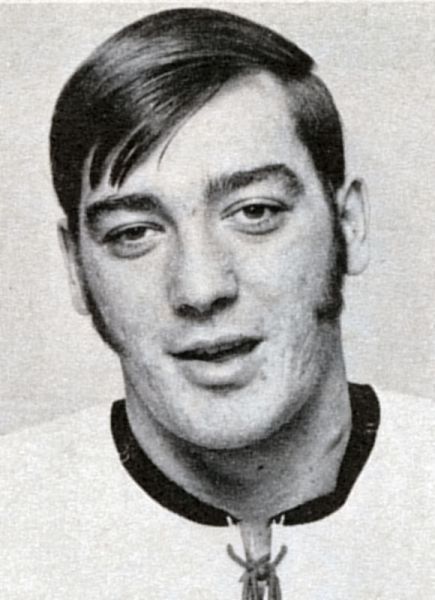
Habs get: 1972 1st Round Pick (Michel Larocque) – 46.7 PS (144-48-31, .893 SV%, 2.83 GAA, 17 SO)
Seals get: Bobby Sheehan – 3.5 PS (20G, 26A for 46P, -16 in 78 Games)
OR
9. A Pick for Bryan Watson – 45.3
Habs get: 1972 1st Round Pick (Michel Larocque) – 46.7 PS (144-48-31, .893 SV%, 2.83 GAA, 17 SO)
Seals get: Bryan “Bugsy” Watson – 1.4 PS (2G, 3A for 5P, -17 in 50 Games)
We’ve got a weird one here. There are conflicting records of how the Habs acquired Michel Larocque, who became their backup for six seasons. Though he only made it into 12 playoff games in those seasons, he was a pretty reliable backup goalie amassing a pretty good regular season career.
The slightly lesser probable trade gave the Seals a young centre who barely played for the Habs. In the latter possible trade (the one more sources say is correct), the Seals got an older, journeyman D.
In both cases the Seals didn’t get much. They traded Watson six months later. Sheehan played a whole season, and was actually pretty good offensively for the Seals, but soon went to the WHA.
Regardless of who they actually gave up for Larocque, the Habs got back a draft pick that turned into a valuable player, for not much in return.
8. Toe Blake for Lorne Chabot – 49.5 PS
Habs get:
- Joseph “Toe” Blake – 52.8 PS (235G, 294A for 529P in 569 Games)
- Ken Grivel – 0 PS (0 GP)
- Bill Miller – (0.6) PS (4G, 3A for 7P in 63 Games)
Maroons get: Lorne Chabot – 2.7 PS (8-3-5, 2.08 GAA, 2 SO)
In February 1936 the Habs traded the recently re-acquired Lorne Chabot, for two young wingers and a less young centre.
The story is a little tangled but here we go:
The Habs had acquired Chabot, the Leafs star goalie (who had led them to two Cups) in 1933 for their star George Hainsworth, because Hainsworth was 5 years older than Chabot.
Chabot had the best regular season of his career but it seems as though Habs management was unhappy with his playoff performance because he was part of the franchise-resetting blockbuster Howie Morenz trade with Chicago nearly a year-to-the-day after he was acquired. (That trade is nearly bad enough to make our list of the Worst Habs trades of All Time list.)
The weird thing is that the Habs reacquired Chabot from Chicago less than a year and a half later, for cash. Chabot had just won the Vezina (though it was still the Jennings). Before he could play a game, they immediately traded him to the Maroons, in this trade.
The league was different in the ’30s and it seems like this was a financially successful franchise flexing its muscle, essentially buying back their former starting goaltender so they could trade him a second time, and this time win the deal.
Chabot had an okay season for the Maroons but they traded him to the Americans at the end of the season for cash. He would retire after his season with the Americans.
Meanwhile…
Ken Grivel never played an NHL game.
Miller was out of the league in just over a year.
But Joseph Blake became Toe Blake, winning the Hart Trophy and two Cups with the Habs. After his Hart win he was named Captain. On the 1944 Canadiens, he led the playoffs in assists and points. Between this trade and his retirement, he had the second most points of any player in the league.
Then, of course, he became the Habs’ head coach, and won a further eight Stanley Cups. (Those wins obviously don’t count towards his Point Shares as a player.)
So buying back their old goalie to trade with the rival really worked out. If this list was measured in Stanley Cup wins for a franchise, this trade would be way up there.
7. Pete Mahovlich for Monahan and Piper – 56.4
Habs get:
- Bart Carshley – o PS (0 GP)
- Pete Mahovlich – 56.3 PS (223G, 346A for 569P, +267 in 580 Games)
Red Wings get:
- Doug Piper – 0 PS (0 GP)
- Garry Monahan – (1) PS (3G, 4A for 7P, -7 in 51 Games)
On June 6, 1969, after only 13 games (and no playoff appearance) of the experiment of having both Mahovlich brothers on the Red Wings, Detroit decided to move on from the younger, less good brother.
Pete Mahovlich had the “bloodlines” that hockey scouts love but had amounted to very little in Detroit, scoring just 90 points in 186 games. (He was likely playing way down in the lineup.)
Bart Crashley was a D who just couldn’t stay in the lineup for the Wings.
Doug Piper was a minor leaguer and Garry Monahan was a young Habs prospect who hadn’t played much.
It’s safe to say the Red Wings thought Pete Mahovlich wasn’t going to amount to that much.
But Doug Piper never played in the NHL (probably predictably).
And Monahan was traded to the Kings after only 51 games for the Red Wings. (He would later have some decent seasons for the Leafs and Canucks.)
Crashley never played a game for the Habs, staying in the minors, and he was later left unprotected in an expansion draft.
But Pete Mahovlich ended up having a hell of a career for the Habs. He scored nearly a point per game and won four Stanley Cups. For a while, he was the Habs’ first line centre, between Guy Lafleur and Steve Shutt.
(Though the trade for Pete’s brother Frank worked out very well for the Habs in terms of Stanley Cups, it didn’t work out so well for them in terms of Point Shares so it is not on this list.)
6. Picks for Gerry Desjardins – 67 PS
Habs get:
- 1969 1st Round Pick (Dick Redmond) – 0 PS (0 GP)
- 1972 1st Round Pick (Steve Shutt) – 77.6 PS (408G, 368A for 776, +413 in 871 Games)
Kings get: Gerry Desjardins – 10.6 PS (26-58-14, .893 SV%, 3.51 GAA, 7 SO)
Here we have one of the innumerable Sam Pollock heists.
Desjardins was a goalie the Habs had the rights to. Was he promising? Maybe? His minor league stats don’t look that good.
But the Habs got the brand new Los Angeles Kings to give them two first round picks for him anyway.
The pick that become Dick Redmond the Habs traded to Minnesota to protect Dick Duff a year after this trade.
But even with that, this trade is still a huge win for the Habs.
Desjardins only played 104 games for the Kings. They traded him to Chicago a year after the trade.
The remaining pick became Steve Shutt, one of the stars for the ’70s Habs. Shut led the league in Goals once, he made one 1st Team and two 2nd Team end-of-season All Star Teams and he won five Stanley Cups. He scored over 400 goals and over 700 points for the Habs.
5. Josh Gorges for Craig Rivet – 73.3 PS
Habs get:
- Josh Gorges – 24 PS (13G, 75A for 88P, +34 in 464 Games)
- 2007 1st Round Pick (Max Pacioretty) – 58.8 PS (226G, 22A for 448P, +36 in 626 Games)
Sharks get:
- Craig Rivet – 9.5 PS (6G, 37A for 43P, +11 in 91 Games)
- 2008 5th Round Pick (Julien Demers) – 0 PS (0 GP)
On February 25, 2007, the Habs traded long-time D Craig Rivet (over 650 games) and a 5th Round pick the next year in a deadline trade for Josh Gorges and a 1st Round pick that summer.
This is one of those trades that shows the danger of trading away your 1st Round picks to add to a playoff roster.
Rivet was fine for the Sharks for the season and a bit he played for them. Although playing him as their #1 D in the playoffs in 2007 says a lot about the Sharks’ defensive depth that year.
The 5th Rounder never added up to an NHL player for the Sharks.
Gorges ended up playing over 450 games for the Habs. He never had as big a role as Rivet did but he still played Top 4 minutes for a number of seasons.
Far more importantly, the Habs used the Sharks’ 1st Rounder, became Max Pacioretty. Though drafted 22nd he is among the best forwards in his draft class. For the decade he was on the Canadiens, nobody scored more goals – Pacioretty outscored all other Habs by over 50 goals. He is also 3rd on the team in Assists and 2nd in Points for that decade.
The Habs gave up a Top 4 D and a pick that likely wouldn’t result in an NHL player for a Top 4 D and a pick that became a 1st line winger. That’s good, right?
4. A pick for Robert Picard – 94.3 PS
Habs get: 1984 3rd Round Pick (Patrick Roy) – 104.9 Ps (289-175-66, .904 SV%, 2.78 GAA, 29 SO)
Jets get: Robert Picard – 10.6 PS (20G, 43A for 63P, +33 in 160 Games)
Robert Picard was a journeyman D who was 26 and played over 350 games for Washington and the Habs. He’d been a plus player for Montreal. We don’t have ice time, but a 3rd round pick seems extremely reasonable for such a player.
Of course, the Habs lucked out with this pick and chose one of the greatest goalies of all time and one of the top players in the Lemieux draft.
Before Roy forced his way out of Montreal he won
- 2 Stanley Cups
- 2 Conn Smythes
- 2 Vezinas
- 4 Jennings
and he made three 1st All Star Teams, two 2nds and one All Rookie.
As usual with later round picks, we cannot credit the Canadiens with some kind of special foresight here. But it’s still the 4th best trade in franchise history.
3. Rights to Ken Dryden for Allen and Reid – 98.6 PS
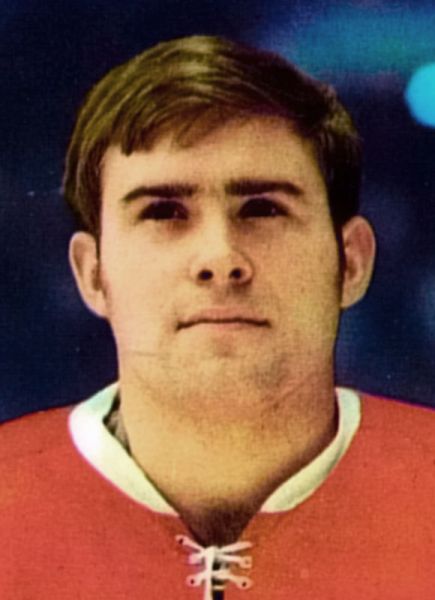
Habs get:
- Alex Campbell – 0 PS (0 GP)
- Rights to Ken Dryden – 98.6 PS (258-57-74, .922 SV%, 2.24 GAA, 46 SO)
Bruins get:
- Guy Allen – 0 PS (0 GP)
- Paul Reid – 0 PS (0 GP)
Speaking of the greatest goalies of all time…
The draft was really different in 1964, it featured only 24 players over four rounds, players who had yet to have their rights claimed by the six NHL franchises. The players had to be 16.
It was fairly well known that Ken Dryden, a Metro Jr. B goalie, planned to go to university, that he didn’t have clear NHL plans. The Bruins knew this.
Moreover, the Bruins had their eyes on Guy Allen, a defensive prospect playing in the OHA (now the OHL).
Did the Habs know something? Did they know the Bruins wanted Allen? Did they have a certain feeling about Dryden?
They must have. The Habs drafted Allen and then flipped him and their 18th overall 3rd round pick, a right winger named Paul Reid, for Dryden and the #2 overall pick, right winger Alex Campbell. This trade happened later that day.
Campbell once scored 49 points in 71 games in the IHL.
Reid never made it to even the minor pros.
Guy Allen had a brief minor league career in the early ’70s.
And Ken Dryden became one of the greatest goalies in NHL history, making five 1st All Star teams and one 2nd and winning
- 6 Stanley Cups
- the Conn Smythe
- the Calder
- five Vezinas (when it was still the Jennings).
All in only seven and a bit seasons.
2. Francois Lacombe for Ernie Hicke – 120.2 PS
Habs get:
- Francois Lacombe – 0 PS (0 GP)
- 1971 1st Round Pick (Guy Lafleur) – 124.3 PS (518G, 728A for 1246P, +470 in 961 Games)
Seals get:
- Ernie Hicke – 4.1 PS (33G, 37A for 70P, -47 in 146 Games)
- 1970 1st Round Pick (Chris Oddleifson) – 0 GP (0 PS)
This is likely the most infamous of Pollock trades. On May 22, 1970, the Habs traded Ernie Hicke and their first round pick for Francois Lacombe and the Seals’ first round pick the next season.
The strategy, as with many of Pollock’s heists, was to give an expansion team something in the present for much more in the future. And it worked spectacularly well with both this trade and the next one on this list.
Hickie was a young left winger (22) with some decent production in the minors. And, of course, the Habs’ 1st rounder was a first round pick at a time when there were only 14 picks in the first round.
Lacombe was a very young D who’s hard to evaluate without ice time. (He had actually been in the Habs system but was traded to the Seals in 1968 as part of “future considerations.”) Given how bad the Seals were in his rookie year (just barely not 3rd last in Goals Against) and given that he didn’t play much in his second year, it’s safe to say his value was not high. And that pick the Seals gave up was in the future.
Hickie scored 20 goals during his first season for the Seals, though he was, um, -36. He was significantly less productive in his second season and was left unprotected during the Flames/Islanders expansion draft.
With their new pick, the Seals drafted Chris Oddleifson 10th overall. However, before he could play a game for the Seals, they traded him as part of a deal for Ivan Boldirev, who was stuck in the Boston farm system due to Boston being so good.
That’s all the Seals got out of this deal.
Lacombe never played a game for the Habs. They left him unprotected in Canucks/Sabres expansion draft.
But what the Habs were banking on is that the Seals would continue to suck. And they really sucked. In 1971, the Seals finished last in Points (10 behind second last), 2nd last in Goals For and last in Goals Against.
It was a great bet and it got them Guy Lafleur.
You could make the case that, for six years, Guy Lafleur was close to the best skater in hockey, and for three of those seasons, he likely was. He made six 1st All Star Teams and won
- 5 Stanley Cups
- 2 Hart Trophies
- the Conn Smythe
- 3 Pearson Trophies
- 3 Art Ross Trophies
He led league in Goals once, Assists once and Points three times. He led the playoffs in Goals twice, Assists twice and Points three times. He played 961 games, scored over 500 goals and nearly 1250 points. He retired in 1985. Oh, and he won five Stanley Cups.
(Then he came back, of course, but we don’t need to talk about that.)
1. Dennis Hextall and a pick for Dick Duff – 157.6 PS
Habs get:
- Dennis Hextall – 0 PS (0 GP)
- 1971 2nd Round Pick (Larry Robinson) – 157.9 (197G, 686A for 883P, +692 in 1202 Games)
Kings get: Dick Duff – 0.3 PS (6G, 8A for 14P, +8 in 39 Games)
For our #1 All Time Montreal Canadiens Trade we go to the same draft, the Guy Lafleur draft, with the same strategy that somehow worked out even better.
Four months before the Habs traded for the pick that would become Guy Lafleur, the Habs traded veteran Dick Duff to the Kings for Bryan Hextall’s son and a 2nd Rounder.
Dennis Hextall was 26 and definitely didn’t seem like he would have a long NHL career. He had scored .38 PPG in a brief stint for the Rangers and only marginally improved that the games he made it into for the Kings.
That likely doesn’t seem enough for Dick Duff, who was finishing up a, um, “Hall of Fame” career. But Duff was about to turn 34 and his PPG had cratered, so getting a younger player and a pick for him likely seemed like a win.
Duff didn’t do much for the Kings and they traded him to Buffalo only 10 months later.
Hextall never played a game for the Habs as they traded him to the hapless Seals for cash the same day as they got the pick that became Lafleur.
But then there’s the pick.
Now, we shouldn’t believe that this was completely planned out.
Before the Habs drafted Larry Robinson, they drafted the following other players:
- Guy Lafleur
- Chuck Arnason
- Murray Wilson.
So they clearly valued Robinson about as much as the rest of the league did at the time.
But still, did it ever work out for the Habs. Larry Robinson helped the Habs to six Stanley Cups, winning the Conn Smythe in 1978, and he won two Norris Trophies. He made three 1st All Star Teams, and three 2nds, and Hockey Reference says he was the most valuable player in the NHL in 1977. Robinson is the all time leader in Plus/Minus.
Obviously some will feel the Lafleur trade was better for the franchise but, using Point Shares, it’s the Robinson trade that was the most productive in its return value. It’s the Greatest Habs Trade of All Time.
Point Share data as of the end of 2022 NHL season.
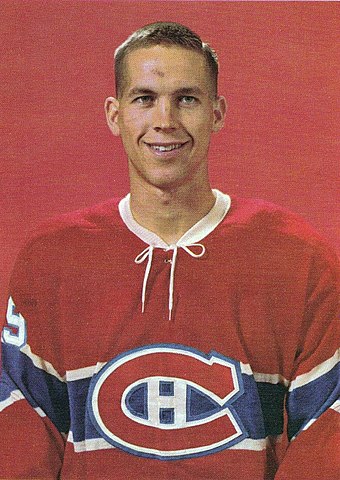
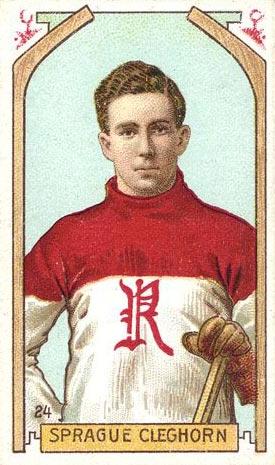
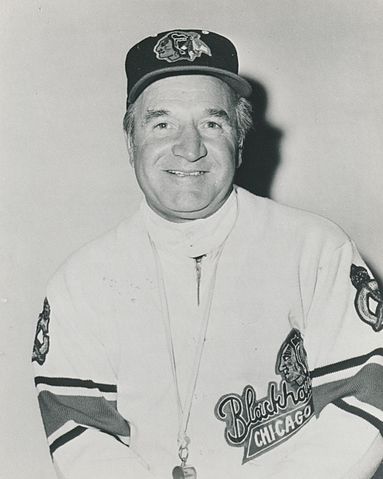






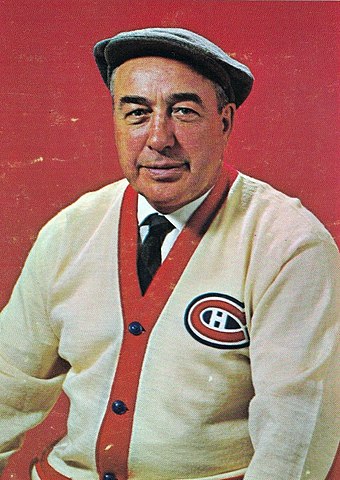






6 thoughts on “The Best 25 Montreal Canadiens Trades of All Time”